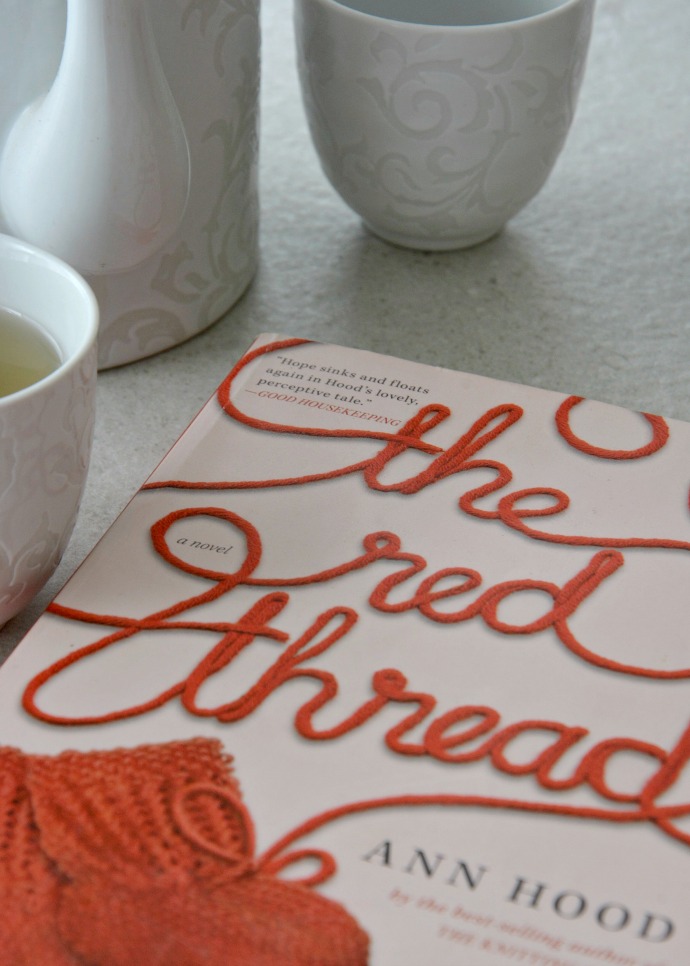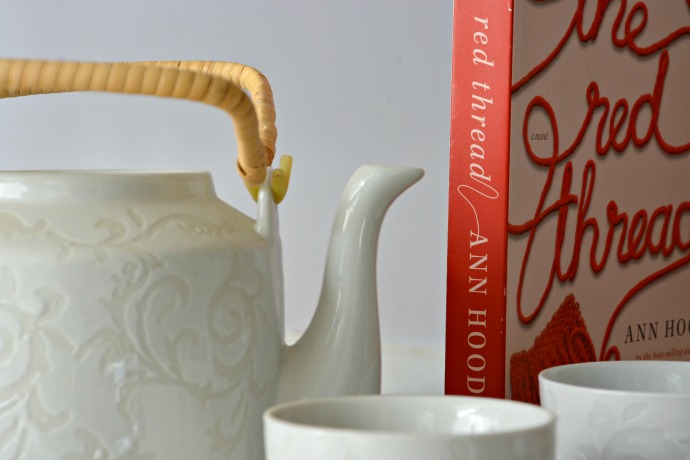The Red Thread written by Ann Hood is the fictional story of longing, loss and ultimate realisation experienced through the adoption of new born babies from China to America.
Maya Lange runs an adoption agency in Providence, R.I. She calls it the Red Thread after a Chinese belief that there is an invisible thread that links children with all of the people who will be part of their lives. The thread can carry across oceans and shortens over time. Maya has so far arranged the adoption of over 450 Chinese baby girls. She takes the American couples through the adoption process until, after a wait of about a year, they travel to China to pick up their babies.

Maya knows that the couples will face many issues during the process and that some may even drop out. The couples rely on her efficiency and organisation. However, behind this professional front, Maya has an inner belief that there is a magical destiny bringing each of the couples and babies together. She uses this conviction so that she can cope with her tragic past; her own baby daughter died in an accident years ago and this broke her marriage apart.
For the couples in the story, the process is stressful and drawn out. Nell and Benjamin Walker-Adams are used to things coming to them almost at will and are the most impatient. Emily has to deal with her husband Michael’s daughter from a previous marriage and fears Michael will not love their adopted child as much. Whilst waiting for their baby, Sophie’s husband Theo has an affair with another parent in the group. Brooke has her heart set on adopting a baby, but Charlie is afraid that he will lose her love when the baby comes. Susannah finds it difficult to love her disabled daughter and resents her husband Carter for the love that she shows him. All of the couples have flaws, but Maya accepts them to the Red Thread Adoption Agency as they are.

Susannah is the expert knitter in the group and creates a sweater and a pink baby blanket for their new daughter. As she knits she is reminded of her mother and grandmother and that gives her comfort. Maya on the other hand took up knitting when she decided to set up the adoption agency. She knits almost mechanically and thinks of it as her lucky charm. Emily is inspired by Susannah’s knitted garments and joins a knitting class to learn how to create a sweater for her new baby herself. Sophie also considers taking up knitting, even though the last time she did so, she spent months knitting a sweater for her boyfriend only to unravel it again when they broke up. Knitting is used through the book as an emotional crutch for these mothers to be.
As the central character in the story, Maya pulls all of the strands together. Ann Hood’s life experience brings touching details to Maya’s background, in particular when she goes through a box her baby’s clothes towards the end of the book. This is because Ann Hood herself lost a daughter and then travelled with her husband and son to Changsha in China where they adopted a baby girl named Annabelle.

There are a myriad of stories here which have poignancy due to the centre of their struggles being the possibility of a prosperous new life in the USA for the Chinese infants. The adopting couples’ character flaws are well described. These weaknesses are depicted from different points of view and so the characters become more rounded to the reader.
It is heart rending to read about the young mothers who part with their newborns. There is a real cruelty by the Chinese husbands and mothers-in-law who force these women into impossible situations due to the government policy on restricting children.
All of the American couples are from similar backgrounds and all want to adopt a baby from the same adoption agency. The lack of differentiation of their background stories means that story loses some of its focus. The author keeps interest by having some of the characters change their mind about adopting, but instead of adding intrigue this tends to be an irritation.

Despite Maya’s thoroughness and because of her history, she seems to accept any couple who comes forward hoping to adopt. The couples in this group would provide financial security. However, they would appear to lack the emotional stability required to be successful in a cross-cultural adoption process.
I included The Red Thread for you here as I really enjoyed The Knitting Circle; however, this book was less satisfying for me personally. Ann Hood’s writing is still a pleasure to read and I particularly enjoyed the passages based in China.
If you are interested in finding out more about one family’s real life experience of adoption read the Larson House blog where Elsie and her husband Jeremy write about their journey to the point of adopting their daughter Nova from China. A roller coaster of emotion with a very happy ending for all concerned.



I adopted 4 daughters from China with my exhusband when we were still married. They are all adults now. Parenting is the hardest thing I have ever done, and back then we did not know about adverse childhood experiences (ACES). I wish I had known more back then, because I would have been better able to help my daughters. I purposely did not read this book and won’t read any stories about China adoptions, but I will say that parenting my daughters was infinitely harder than waiting for them,